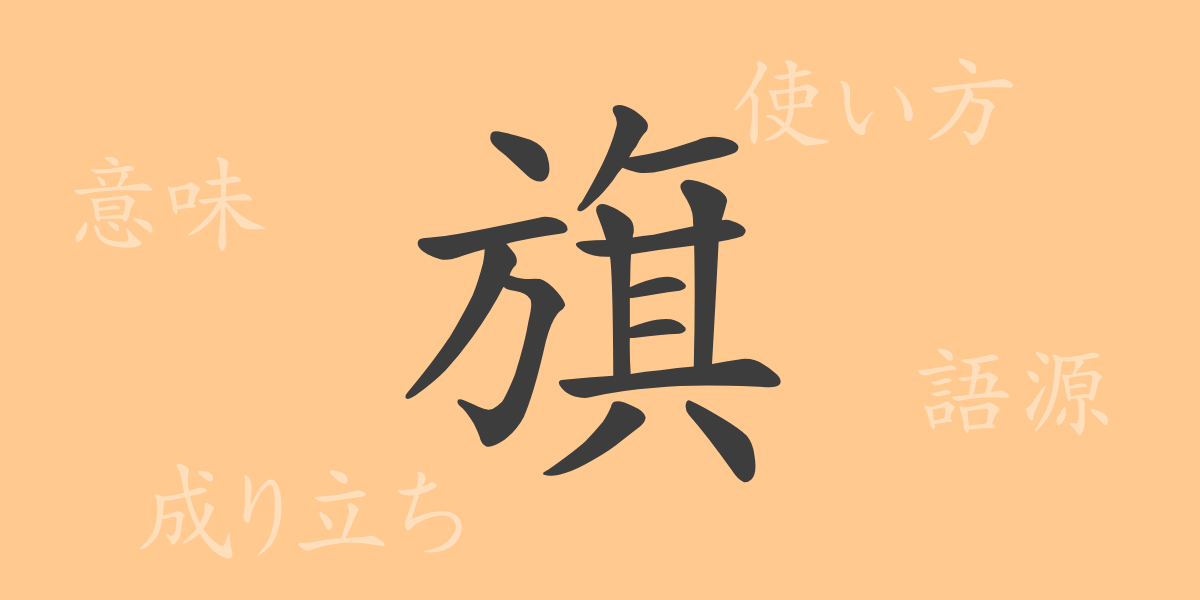Flags have the power to unite hearts across borders and eras. This symbol has held various meanings throughout history and has deeply rooted itself in cultures and societies. Focusing on the Japanese common-use kanji “旗” (hata), we explore its origins and contemporary usage. Let’s embark on a journey into the vibrant world of flags.
Origin of the Flag (語源)
The origin of the kanji “旗” (hata) dates back to ancient China. It is believed that cloths used by the military for signals and identification were the origins, indicating different units or ranks by their shapes and colors. In Japan, it has been used since ancient times as military flags and festival banners (のぼり, nobori), serving as symbols of groups.
Meaning and Usage of Flags
The kanji “旗” (hata) is used as a symbol of nations and organizations, or to convey specific messages or beliefs. Its applications are diverse, including sports cheering flags and advertising banners. It can also hold metaphorical meanings, where the expression “振る” (furu) a flag signifies rallying or promoting an action or movement.
Reading, Stroke Count, and Radical of the Flag
The Japanese common-use kanji “旗” (hata) carries a deep history in its shape and meaning.
- Reading: On-yomi (Chinese reading) is “キ” (ki), and Kun-yomi (Japanese reading) is “はた” (hata)
- Stroke count: 14 strokes
- Radical: Flag radical (旗部, hatahen)
Idioms, Proverbs, and Expressions Using Flags
Idioms, proverbs, and expressions that include “旗” (hata) enrich the Japanese language. For example, “旗揚げする” (hataage suru) means to start a new business or activity, “旗色を見る” (hatairo wo miru) means to assess the situation, and “旗手” (kishu) refers to a leader or a pioneer. These phrases are commonly used in daily conversations and business settings.
Summary on Flags
Although “旗” (hata) is merely a piece of cloth, the meanings it carries are immeasurable. Reflecting on its historical background and evolution to the present day allows us to recognize the importance of its symbolism. From national flags that signify a country’s identity to banners that express personal beliefs, their uses are diverse. Flags will continue to color and guide our lives.

























